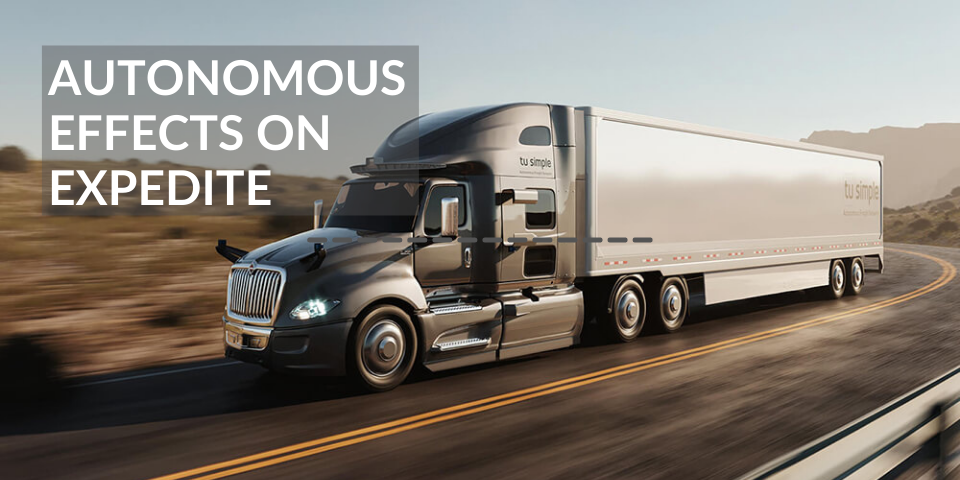In The News

Autonomous Effects on Expedite
The fret over commercial drivers losing their jobs to machines may not be as palpable as first believed, as when the idea of companies operating driver-free machines over-the-road was first brought to the foreground.
Face it, there hasn’t been a lot of interest for youngbloods to enter the world of over-the-road trucking for quite some time. One might even argue that the past twenty-years has seen a precipitous drop in engagement with the younger generation when it comes to joining a workforce such as trucking.
In full honesty, it only makes sense that if there is a waning want for youths to obtain their CDL and hit the road for work, then why wouldn’t companies who specialize in ground transportation look for other options to help keep freight flowing.
The Current Situation
TuSimple, one of the early players in autonomous trucking, and their Autonomous Freight Network (AFN) recently became the first autonomous trucking organization to complete an 80-mile freight route without a human on board, the first such run with a Class 8 truck to trek the public roadways. They’ve also grown their fleet to more than 70 heavy-duty robotic tractors, 50 of which are currently operating in the United States.
The plan is to move autonomously throughout the southern states, a route from Phoenix, AZ to Orlando, FL, while continuously monitoring the end-to-end safety of the vehicles from afar. Doing so will provide additional data and diagnostics to the trucks and their engineers so that they can better streamline the process as time marches on.
The Future Outlook
As it’s currently planned and laid out, companies like TuSimple will provide and manage the driverless equipment, while the asset owners will handle freight capacity and lane details. The idea being that companies who partner with autonomous truck providers will book the loads and provide the details, while those who own the robotic equipment will make the physical moves for the trucks. Paying a per mile fee will help trucking companies move their freight more economically, while utilizing their fleet of living and breathing drivers more wisely.
What it Means for Expediters
On the surface, not much should change for those who make their hay with an expedite outfit. And if consideration is given to the premise that expedite freight is often time-sensitive, with little to no pre-planning on many of the loads, it would be conceivably difficult for an autonomous outfit to manage the fluctuation of such freight.
Plus, most expedite loads tend to be shorter runs due to their higher priority and even quicker turnaround. Using driverless vehicles to manage load trends like that, is bound to be more difficult than planning out a weekly or monthly recurring run from shipper to customer. The expedite industry needs its drivers, period.
The final variable to consider is that many drivers these days prefer to stay local or regional, getting them home more often. With expedited loads, it would be increasingly possible to maintain driver locality when the expectation is that the longer runs may go to the autonomous trucks.
Bottom line, though, is that the future is here and it looks like we’re all going to be along for the ride.
